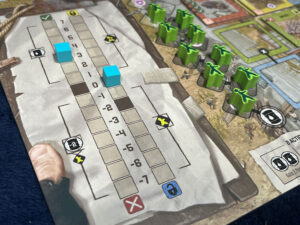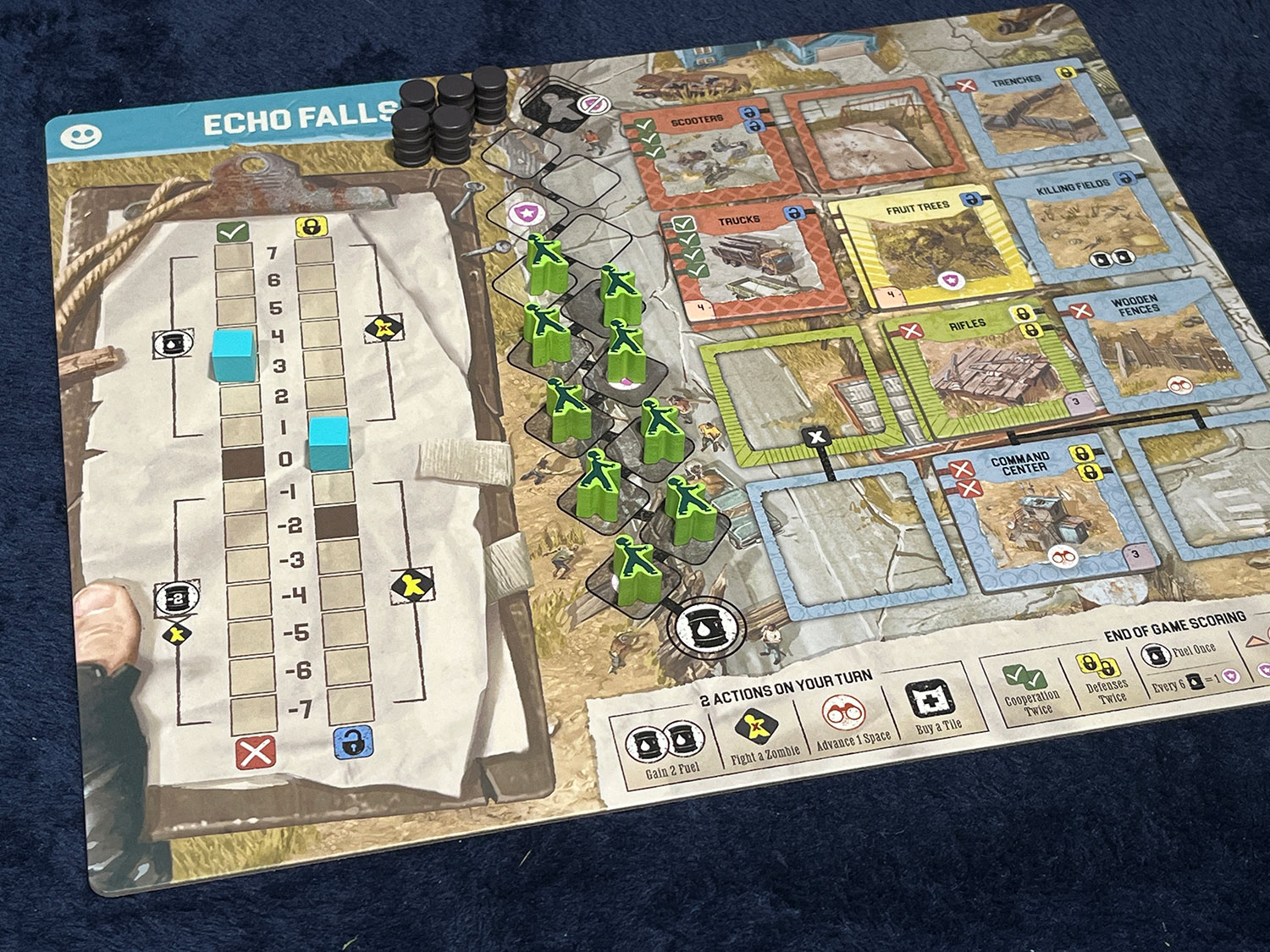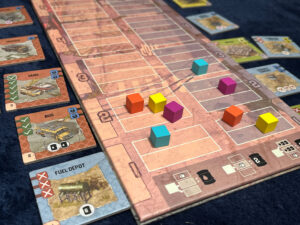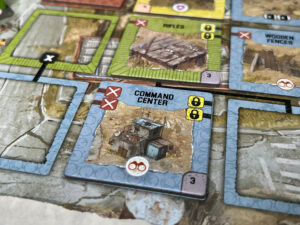 Trick or Treat Studios as a board game publisher is a relatively newcomer to the industry. While they’ve been in business for almost a decade producing great-looking costumes and props, I first took notice of them in the tabletop space with their release of the Knizia classic Nightmare Productions. You check out my full review of it if you want to know more, but it’s an excellent auction game and still has a spot in my collection.
Trick or Treat Studios as a board game publisher is a relatively newcomer to the industry. While they’ve been in business for almost a decade producing great-looking costumes and props, I first took notice of them in the tabletop space with their release of the Knizia classic Nightmare Productions. You check out my full review of it if you want to know more, but it’s an excellent auction game and still has a spot in my collection.
One of their new releases is another not-so-new game from the good doctor. Originally published under the name Prosperity, it was a game about building a new country with the need to balance concerns over energy and ecology…😴. The theme was fine, but not really something I was interested in.
This new edition though piqued my interest. City of the Living now drops you in the shoes of survivalist trying to protect their settlement during a zombie apocalypse. Can a fresh coat of paint and a new theme breathe some life back into a 10-year-old game? Let’s find out.
Gameplay Overview:
Each player in City of the Living gets their own settlement board with areas for building tiles and tracks to manage their defenses, cooperation, and zombie threat.
At the start of a player’s turn, they draw a new tile from the stack and add it to the market. The highlighted icon on the tile will determine what event happens. These range from gaining or losing fuel (the currency in the game), gaining or removing zombies, advancing on the scavenging tracks, or gaining advantage (victory points).

After that, the player can take two actions: Gain 2 fuel, remove 1 zombie, advance a space on one of the scavenging tracks, or build community. It’s this last one that’s the most interesting.
To build community, you are adding new tiles to your settlement. The cost for a new tile is based on your position on the matching scavenging track. You’ll pay 2 fuel, or fewer if you are far enough ahead on the track. If you are behind in position, you’ll need to pay extra fuel. But all tiles have various icons that can change the position of your defense or cooperation, or add symbols for fuel, scavenging, or advantage. Once the tile is placed, you change any relevant tracks and then after your second action, the next player goes.
The game ends after the last tile is drawn and end game points are added. The player with the most Advantage is the leader of the apocalypse.

Game Experience:
While I never played Prosperity, I feel like this theme is a much better fit for the gameplay. In Prosperity, you were building a nebulous country and had to manage your energy and pollution tracts. It was fine, but forgettable by all accounts.
In City of the Living, you are constantly having to manage your cooperation and city defenses. There is a fun push and pull here where the tighter you shore up your defenses, the lower your cooperation rating is. A high cooperation gets you extra fuel, while a high defense will protect you from zombies. And that’s important because too many zombies surrounding your settlement will stop you from gaining Advantage. Yet if you turtle up and focus solely on defense, you’ll cut off your fuel supply and your town will stagnate. It’s a nice balancing act that I really enjoyed.

The events that happen each turn are also somewhat predictable. In standard Knizia fashion, there are 5 events, and each year (the game has 7 years) will feature each event once. That gives you time to prepare you settlement. If 3 tiles have been pulled already, you may know that the only events left are Defenses and Fuel. That means that you have to prep your defenses for the upcoming attack, and can let other needs rest until a future turn.
To touch back on the theme for a minute, while I like the new art, I wish the tiles were designed a little bit better. The highlighted event can sometimes be a bit hard to see, so more prominence to that would have been helpful. My other issue, and this is more of a personal thing, is that I wish the borders of the tiles weren’t so big. It’s fun watching your settlement grow with each new addition, so getting rid of the thick colored borders could have made for a much more visually interesting experience.

My biggest issue with the game probably comes from player scaling. Right now, you use all the tiles and nothing changes based on player count. And since the game ends when the last tile is drawn, that means that in a 2-player game you are getting twice as many turns as a 4-player game. At two players, there are usually plenty of tiles to handle your needs, so it’s almost an optimization puzzle to see who can make the best city.
While once you get up to 3-4 players is more about surviving the events. Each year you only get 1-2 turns, so if you go first in a round and pull the Scavenging event, that could mean the cooperation and defenses event hit before you even get a chance to react. In one of our games, a player was overloaded with zombies because he had a hard time getting defense tiles in time (or that weren’t snatched up by the other players).
Final Thoughts:
City of the Living is another solid Knizia design (co-designed with Sebastian Bleasdale) that’s on the cusp of being a great game. While it’s multiplayer solitaire, that doesn’t really bother me. But I do wish the player scaling would have been addressed in this reprint. Right now I think it’s best as a two-player game unless you are looking for some city-building chaos. That being said, I think this theme is an upgrade over Prosperity, so if you love some tile drafting and city management, this one is worth checking out.
Final Score: 3.5 Stars – A decade-old game gets a fresh coat of paint and still holds up pretty well.
 Hits:
Hits:
• A much more fitting theme
• Balancing the two tracks makes for interesting decisions
• A great two-player game
Misses:
• Graphic design could be better
• A bit too chaotic at 3-4 players.





















